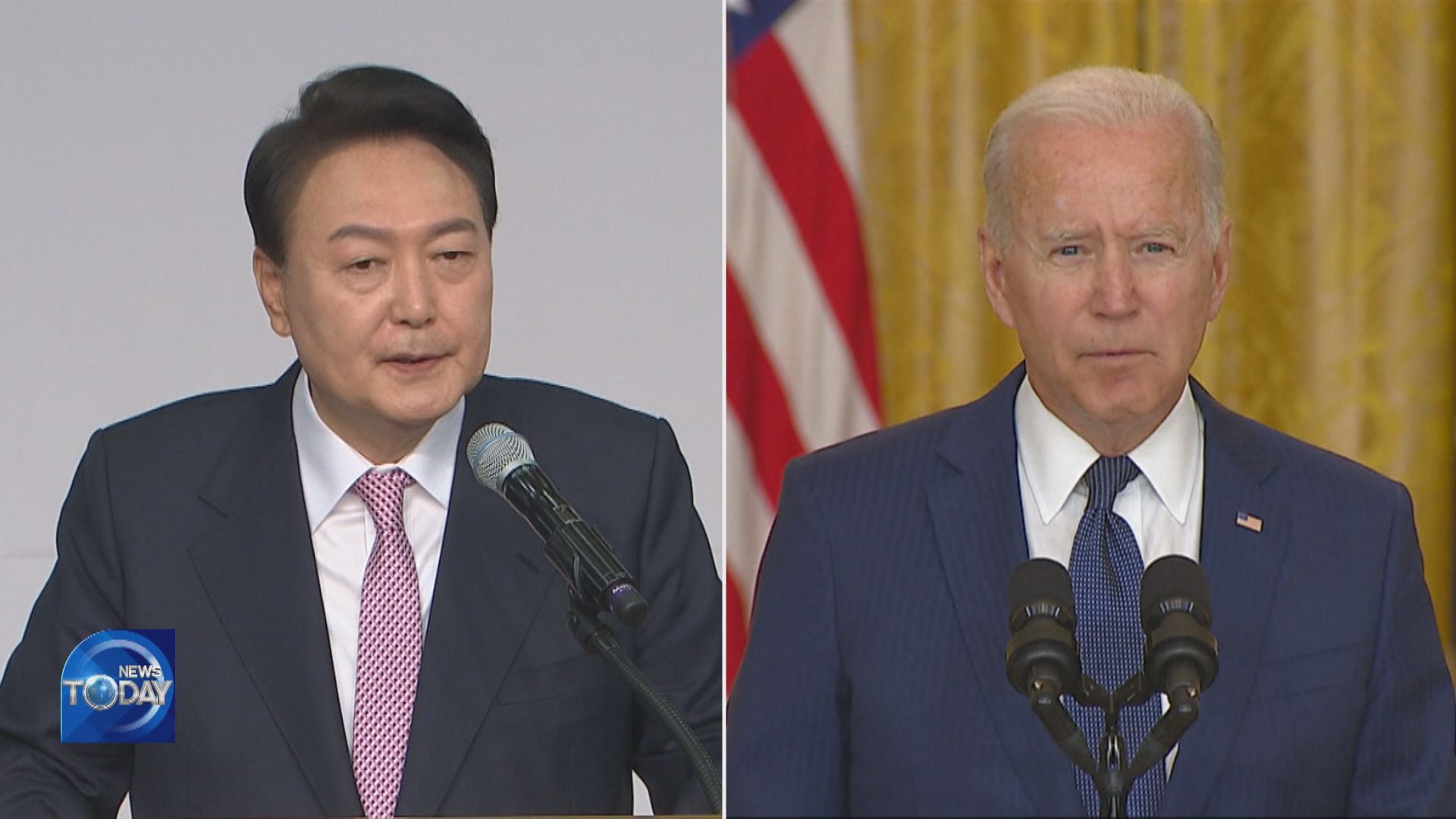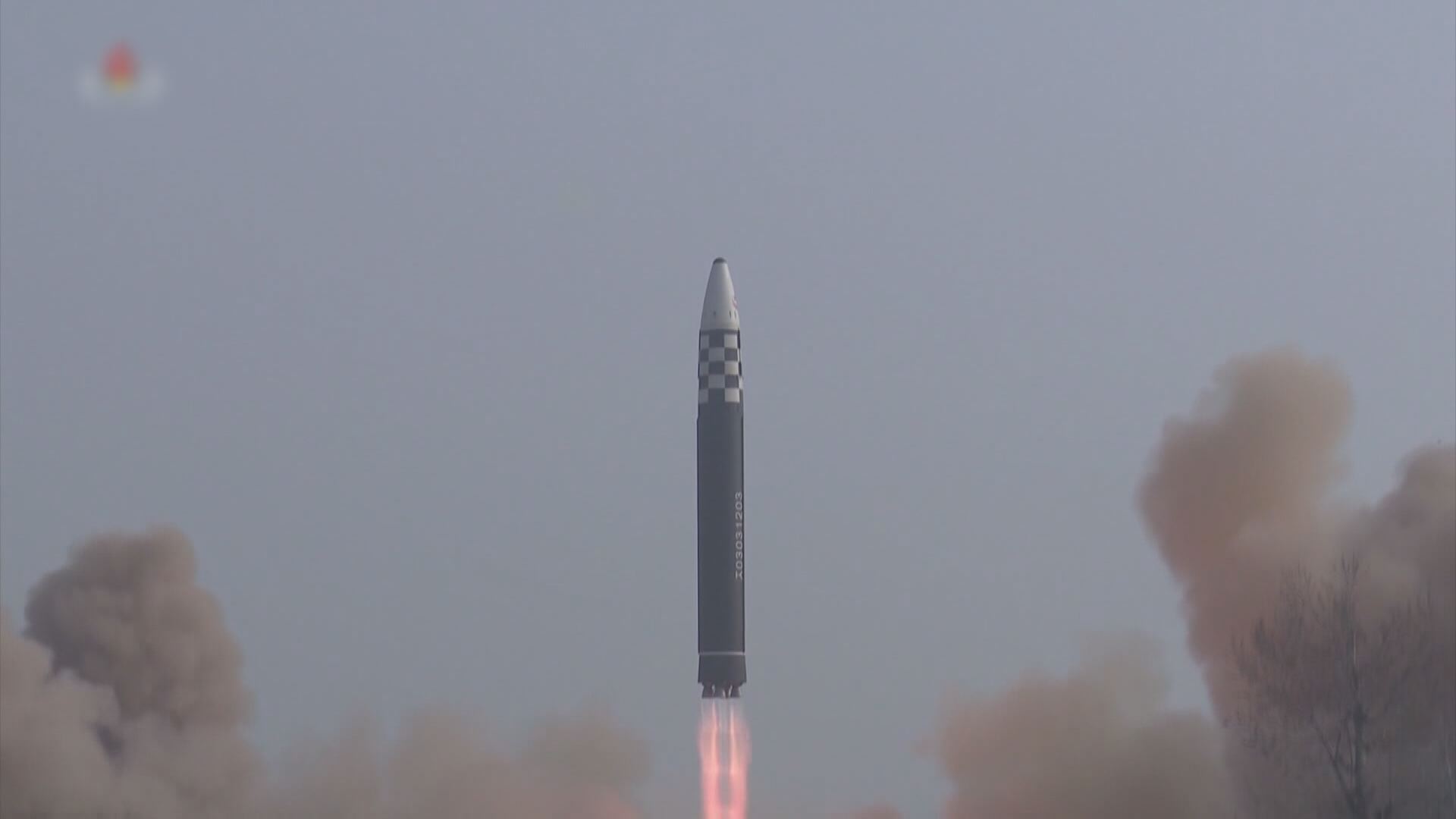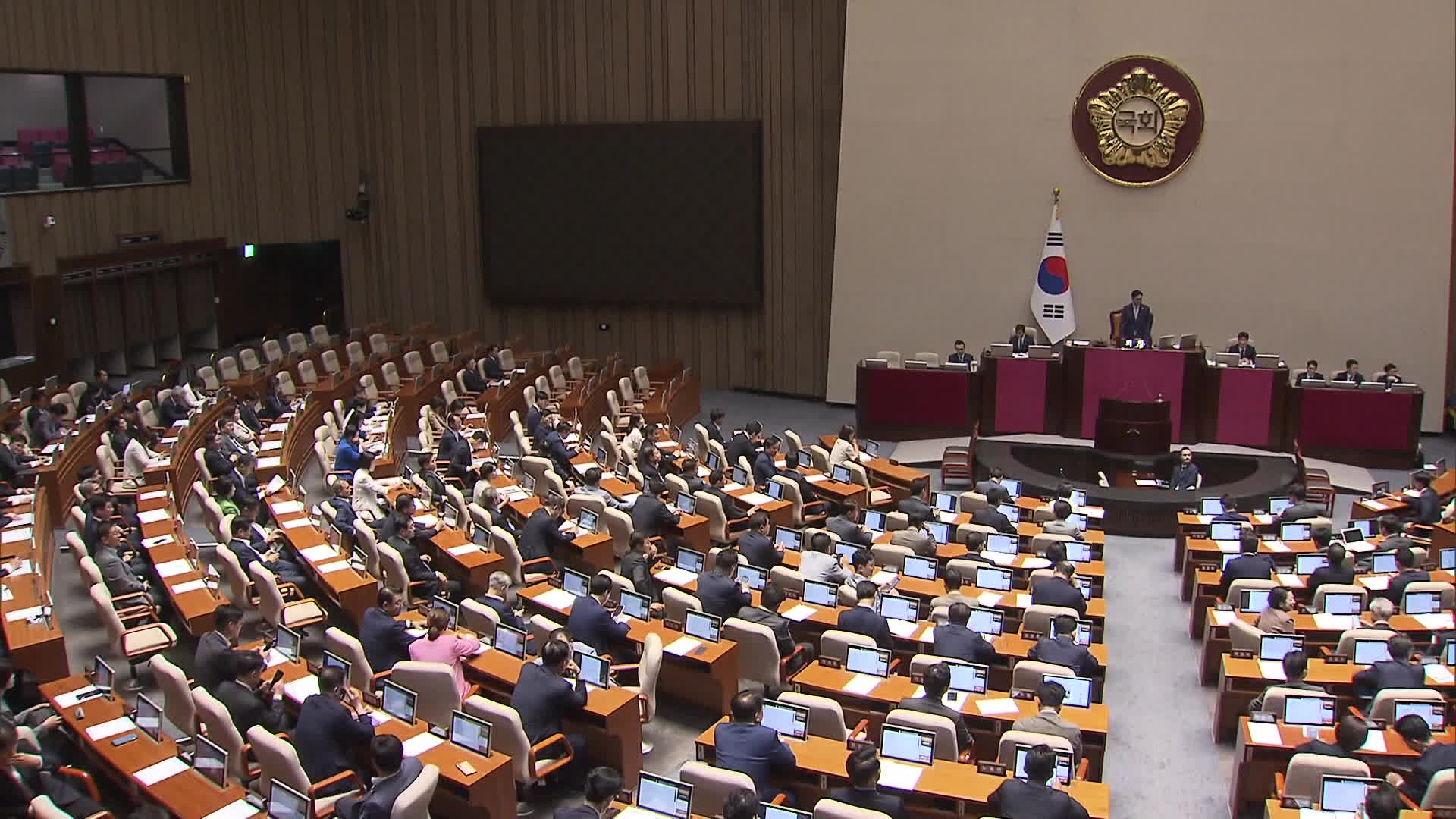S. KOR-U.S.’ ANALYSIS ON N. KOR’S MISSILE
입력 2022.03.28 (15:11)
수정 2022.03.28 (16:46)
읽어주기 기능은 크롬기반의
브라우저에서만 사용하실 수 있습니다.
[Anchor Lead]
North Korea is bragging that it successfully test-fired an up-to-date intercontinental ballistic missile called the Hwaseong-17. However, South Korean and U.S. authorities are known to have tentatively concluded that the missile was the old version Hwaseong-15. The North is also believed to be building a new passage to its nuclear test site in Punggye-ri.
[Pkg]
Regarding North Korea’s latest ICBM launch, a South Korean military official says that based on various information and sources, the military decided from the start that the missile was a Hwaseong-15. He added there are solid bases for the conclusion. The first reason: weather conditions. When the test was conducted at 2:34 p.m. on March 24th, it was cloudy in Sunan. But in the photo, the skies are clear. Analysts point out the direction of the launch pad’s shadow implies it was likely carried out during the morning. The second reason: the projectile’s explosion in the previous missile launch on March 16. It is presumed that the explosion was caused by a fuel leakage in the first-stage engine of the missile, which was identified as the Hwaseong-17. It is extremely unusual in rocket engineering to re-launch the same missile in just eight days.
[Soundbite] Prof. Chang Young-keun(Korea Aerospace Univ.) : "Following a failed launch, it takes two or three months to review design data and identify the cause. It then takes another several months to revise the design and fix it, since there is a big drawback with the engine. An engine defect was repaired in a week and the missile was launched again? That's impossible."
But some raise doubt about the analysis, saying it would be difficult for Pyongyang to fabricate a public event, which was carried out on North Korean leader Kim Jong-un’s direct order, with many people participating.
[Soundbite] Prof. Park Won-gon(Ewha Womans Univ.) : "The fabrication must have required the collusion of many people in every process, including filming. Although North Korea is a controlled society, it will pose a great challenge to the regime if it’s found that Kim Jong-un’s direct order was fake."
Amid this situation, it is known that there are new moves at North Korea’s nuclear test site in Punggye-ri. During the 2018 demolition, only the entrances to the No. 3 and No. 4 tunnels collapsed. Currently, the regime is spotted focusing on restoring the No. 3 tunnel. The reclusive state is building a new passage to the tunnel, instead of restoring the collapsed entrance. The South Korean military believes the restoration will be completed in weeks or a few months at the latest.
North Korea is bragging that it successfully test-fired an up-to-date intercontinental ballistic missile called the Hwaseong-17. However, South Korean and U.S. authorities are known to have tentatively concluded that the missile was the old version Hwaseong-15. The North is also believed to be building a new passage to its nuclear test site in Punggye-ri.
[Pkg]
Regarding North Korea’s latest ICBM launch, a South Korean military official says that based on various information and sources, the military decided from the start that the missile was a Hwaseong-15. He added there are solid bases for the conclusion. The first reason: weather conditions. When the test was conducted at 2:34 p.m. on March 24th, it was cloudy in Sunan. But in the photo, the skies are clear. Analysts point out the direction of the launch pad’s shadow implies it was likely carried out during the morning. The second reason: the projectile’s explosion in the previous missile launch on March 16. It is presumed that the explosion was caused by a fuel leakage in the first-stage engine of the missile, which was identified as the Hwaseong-17. It is extremely unusual in rocket engineering to re-launch the same missile in just eight days.
[Soundbite] Prof. Chang Young-keun(Korea Aerospace Univ.) : "Following a failed launch, it takes two or three months to review design data and identify the cause. It then takes another several months to revise the design and fix it, since there is a big drawback with the engine. An engine defect was repaired in a week and the missile was launched again? That's impossible."
But some raise doubt about the analysis, saying it would be difficult for Pyongyang to fabricate a public event, which was carried out on North Korean leader Kim Jong-un’s direct order, with many people participating.
[Soundbite] Prof. Park Won-gon(Ewha Womans Univ.) : "The fabrication must have required the collusion of many people in every process, including filming. Although North Korea is a controlled society, it will pose a great challenge to the regime if it’s found that Kim Jong-un’s direct order was fake."
Amid this situation, it is known that there are new moves at North Korea’s nuclear test site in Punggye-ri. During the 2018 demolition, only the entrances to the No. 3 and No. 4 tunnels collapsed. Currently, the regime is spotted focusing on restoring the No. 3 tunnel. The reclusive state is building a new passage to the tunnel, instead of restoring the collapsed entrance. The South Korean military believes the restoration will be completed in weeks or a few months at the latest.
■ 제보하기
▷ 카카오톡 : 'KBS제보' 검색, 채널 추가
▷ 전화 : 02-781-1234, 4444
▷ 이메일 : kbs1234@kbs.co.kr
▷ 유튜브, 네이버, 카카오에서도 KBS뉴스를 구독해주세요!
- S. KOR-U.S.’ ANALYSIS ON N. KOR’S MISSILE
-
- 입력 2022-03-28 15:11:47
- 수정2022-03-28 16:46:31

[Anchor Lead]
North Korea is bragging that it successfully test-fired an up-to-date intercontinental ballistic missile called the Hwaseong-17. However, South Korean and U.S. authorities are known to have tentatively concluded that the missile was the old version Hwaseong-15. The North is also believed to be building a new passage to its nuclear test site in Punggye-ri.
[Pkg]
Regarding North Korea’s latest ICBM launch, a South Korean military official says that based on various information and sources, the military decided from the start that the missile was a Hwaseong-15. He added there are solid bases for the conclusion. The first reason: weather conditions. When the test was conducted at 2:34 p.m. on March 24th, it was cloudy in Sunan. But in the photo, the skies are clear. Analysts point out the direction of the launch pad’s shadow implies it was likely carried out during the morning. The second reason: the projectile’s explosion in the previous missile launch on March 16. It is presumed that the explosion was caused by a fuel leakage in the first-stage engine of the missile, which was identified as the Hwaseong-17. It is extremely unusual in rocket engineering to re-launch the same missile in just eight days.
[Soundbite] Prof. Chang Young-keun(Korea Aerospace Univ.) : "Following a failed launch, it takes two or three months to review design data and identify the cause. It then takes another several months to revise the design and fix it, since there is a big drawback with the engine. An engine defect was repaired in a week and the missile was launched again? That's impossible."
But some raise doubt about the analysis, saying it would be difficult for Pyongyang to fabricate a public event, which was carried out on North Korean leader Kim Jong-un’s direct order, with many people participating.
[Soundbite] Prof. Park Won-gon(Ewha Womans Univ.) : "The fabrication must have required the collusion of many people in every process, including filming. Although North Korea is a controlled society, it will pose a great challenge to the regime if it’s found that Kim Jong-un’s direct order was fake."
Amid this situation, it is known that there are new moves at North Korea’s nuclear test site in Punggye-ri. During the 2018 demolition, only the entrances to the No. 3 and No. 4 tunnels collapsed. Currently, the regime is spotted focusing on restoring the No. 3 tunnel. The reclusive state is building a new passage to the tunnel, instead of restoring the collapsed entrance. The South Korean military believes the restoration will be completed in weeks or a few months at the latest.
North Korea is bragging that it successfully test-fired an up-to-date intercontinental ballistic missile called the Hwaseong-17. However, South Korean and U.S. authorities are known to have tentatively concluded that the missile was the old version Hwaseong-15. The North is also believed to be building a new passage to its nuclear test site in Punggye-ri.
[Pkg]
Regarding North Korea’s latest ICBM launch, a South Korean military official says that based on various information and sources, the military decided from the start that the missile was a Hwaseong-15. He added there are solid bases for the conclusion. The first reason: weather conditions. When the test was conducted at 2:34 p.m. on March 24th, it was cloudy in Sunan. But in the photo, the skies are clear. Analysts point out the direction of the launch pad’s shadow implies it was likely carried out during the morning. The second reason: the projectile’s explosion in the previous missile launch on March 16. It is presumed that the explosion was caused by a fuel leakage in the first-stage engine of the missile, which was identified as the Hwaseong-17. It is extremely unusual in rocket engineering to re-launch the same missile in just eight days.
[Soundbite] Prof. Chang Young-keun(Korea Aerospace Univ.) : "Following a failed launch, it takes two or three months to review design data and identify the cause. It then takes another several months to revise the design and fix it, since there is a big drawback with the engine. An engine defect was repaired in a week and the missile was launched again? That's impossible."
But some raise doubt about the analysis, saying it would be difficult for Pyongyang to fabricate a public event, which was carried out on North Korean leader Kim Jong-un’s direct order, with many people participating.
[Soundbite] Prof. Park Won-gon(Ewha Womans Univ.) : "The fabrication must have required the collusion of many people in every process, including filming. Although North Korea is a controlled society, it will pose a great challenge to the regime if it’s found that Kim Jong-un’s direct order was fake."
Amid this situation, it is known that there are new moves at North Korea’s nuclear test site in Punggye-ri. During the 2018 demolition, only the entrances to the No. 3 and No. 4 tunnels collapsed. Currently, the regime is spotted focusing on restoring the No. 3 tunnel. The reclusive state is building a new passage to the tunnel, instead of restoring the collapsed entrance. The South Korean military believes the restoration will be completed in weeks or a few months at the latest.
이 기사가 좋으셨다면
-
좋아요
0
-
응원해요
0
-
후속 원해요
0












![[속보] 김건희 특검팀, 이응근 전 삼부토건 대표 <br>소환조사](/data/layer/904/2025/07/20250704_TDFd6l.jpg)

![[속보] 내란특검 “윤 변호인 수사방해 의혹, 파견경찰이 자료수집 중”](/data/news/2025/07/04/20250704_zxJ5qZ.jpg)
![[단독] “이 대통령, 주요국에 특사파견 예정…미·일 특사 막판 조율”](/data/layer/904/2025/07/20250704_DNItCk.jpg)

이 기사에 대한 의견을 남겨주세요.